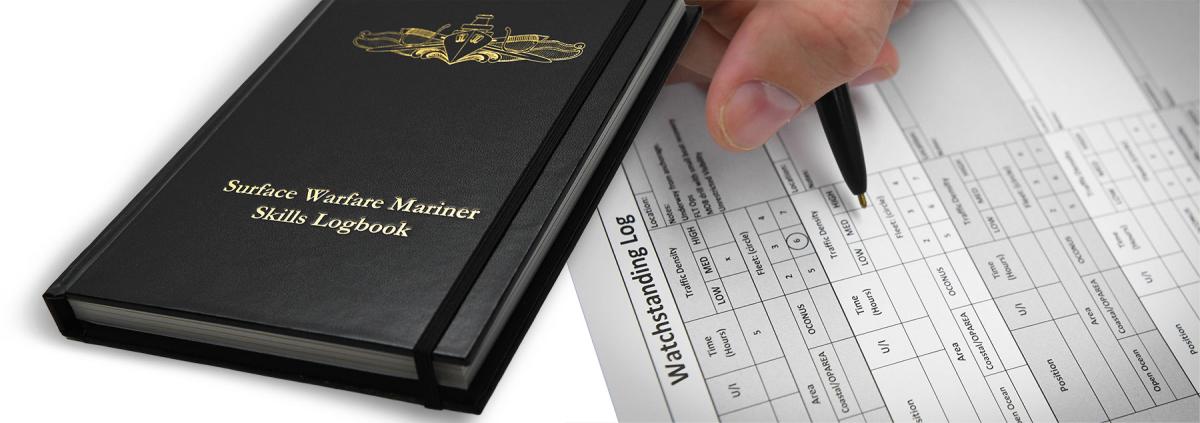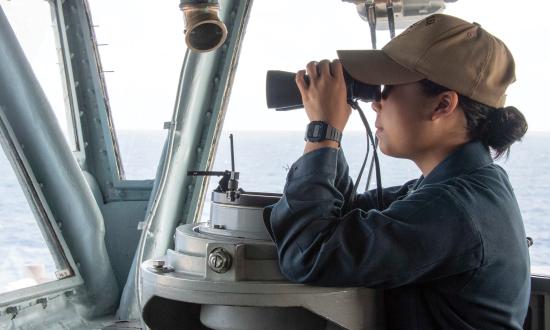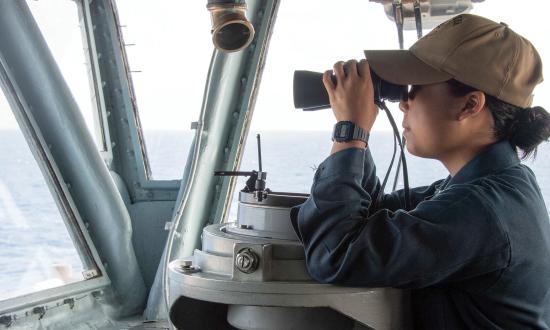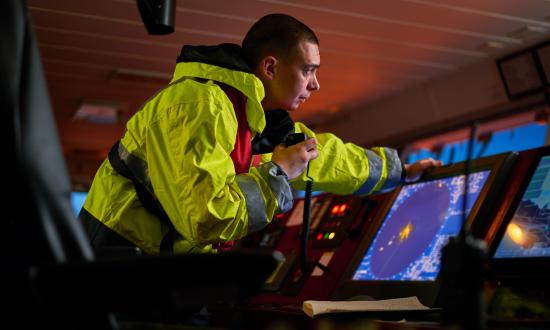A decade ago, the surface warfare community introduced its latest initiative to fix the lackluster proficiency of officers of the deck: the SWO Pro Book. The premise was simple: track the hours an officer spent on watch and record the various factors affecting the watch’s complexity, so the officer’s relative proficiency could be calculated.
There was little follow through, however, and the Pro Book died a quiet death. Were it not for the deficiencies in seamanship tragically highlighted in 2017, it may have remained dormant, but in the search for solutions to that problem, Son of Pro Book was born: the Surface Warfare Mariner Skills Logbook.1
The logbook is little more than the online Pro Book bound in black leather. The net effect has been to levy another unresourced requirement on already overburdened afloat watchstanders. The results, then, should not be too hard to fathom: Officers have reported gundecking their logs, and some ships have simply not sent in their “required” periodic summaries. The logbook is not sunk yet, but it surely is taking on water.
What is truly frustrating about the logbook, though, is that the data the miners seek already is being captured. Ships have made deck logs for centuries, and every officer who takes the deck or conn is recorded and entered into the ship’s official record, which will live for all time in the National Archives. An electronically recorded log, signed by a watchstander’s common access card, could be uploaded, without user interaction, for the analysts to parse. Better still, it could include raw navigational track and radar video, so that any given watch could be replayed on a bridge simulator. This is not a flashy solution, but it would do a better job getting at the intent of the logbook without burdening the people it purports to help.
Beyond the logbook, another idea for the professional tracking of SWOs can be found in the merchant mariner community. Its qualification is based on both time and testing and would require minimal modification for implementation by the surface navy.
As an initial step, all seagoing rates and 111X/116X officers would be issued a transportation worker’s identification card (TWIC) and a merchant mariner document (MMD). A TWIC is nearly identical to the common access card. The MMD, similar in format to a U.S. passport, serves as the official record of a merchant mariner’s qualifications. To get an MMD, a mariner must pass a drug test and physical, something all Navy sailors already must do on a regular basis.
Nowhere in an MMD is hours spent afloat or platforms served on. That documentation is forwarded to the U.S. Coast Guard’s National Maritime Center (NMC), which issues licenses and endorsements. An entry-level mariner begins as an ordinary seaman, wiper (engine), or food handler. Every sailor graduating boot camp in a seagoing rate should be issued an MMD with this endorsement. Every 116X officer should be given an apprentice mate endorsement.
Once a mariner has accrued 1,080 days afloat, he or she can qualify for a third mate’s license or endorsement as an able seaman. Both require testing by the NMC or an authorized schoolhouse. If the mariner has completed certain courses or practical demonstrations, he or she also may be eligible for an international endorsement (Standards of Training, Certification, and Watchkeeping for Seafarers), as well as the national license.
As sailors progress through their careers, they also should advance in their MMD. SWOs should easily qualify as third mate before leaving their division officer tours. Department heads should have their second mate and be closing in on chief mate. Commanding officers and executive officers should be qualified as masters. A seasoned boatswain’s mate should be able to achieve able seaman, and senior engineers should be able to work on their third assistant engineer (third mate equivalent) licenses while standing engineer officer of the watch. These MMDs would demonstrate the proficiency of the surface community. They also would flesh out the ranks of a merchant mariner reserve as sailors leave active duty, providing career opportunities for veterans as well as enabling sealift in a national emergency.
It would take some work to integrate MMDs into the SWO certification continuum. The deck license requires knowledge of merchant vessel–specific information and celestial navigation that SWOs do not cover, so different test modules may need to be developed. But ditching logbooks for MMDs would enhance standards and give sailors a useful credential for civilian life.






